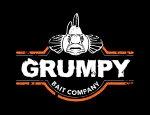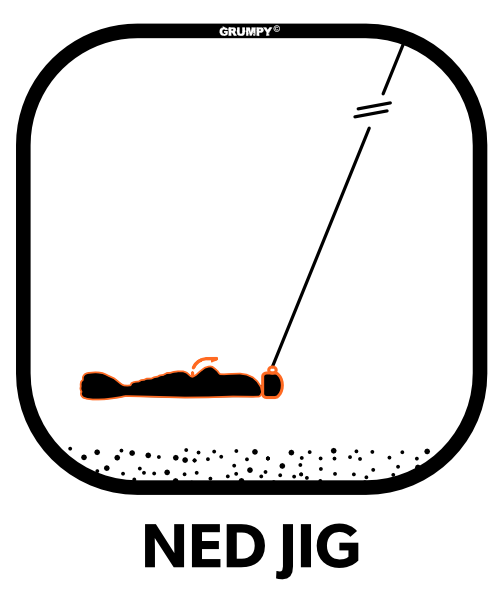GOBY, GOBY, GOBY - What Anglers Need To Know.
Round Goby are now part of the Great Lakes ecosystem no matter what we say or do to prevent their spread. Once inadvertently introduced into Lake St. Clair, these bottom-dwelling, invasive species spread rapidly and now exist in many inland lakes and rivers across both Canada and the USA. Rather than focusing on the historical introduction of goby and their impacts to the ecosystem, we will focus this article on how anglers can take advantage of their presence.
Round Goby are the primary goby species found in the Great Lakes region. They can grow up to 11 inches in length but most fish such as Smallmouth Bass, Largemouth Bass, Walleye and Lake Trout prefer 2 to 4 inch length gobies. Their large head, outwardly protruding eyes and torpedo-like body distinguish goby from other small fish species. Their large pectoral fins almost act as legs as they hop and scurry across the bottom and their large caudal fin helps push them forward in quick, short bursts. Notably their unique, double dorsal fin also helps predator fish determine goby from common minnows. Since goby do not have air bladders, they are restricted to the bottom and rarely swim higher than just a few inches above the lake/river floor.
Key Characteristics of Round Goby
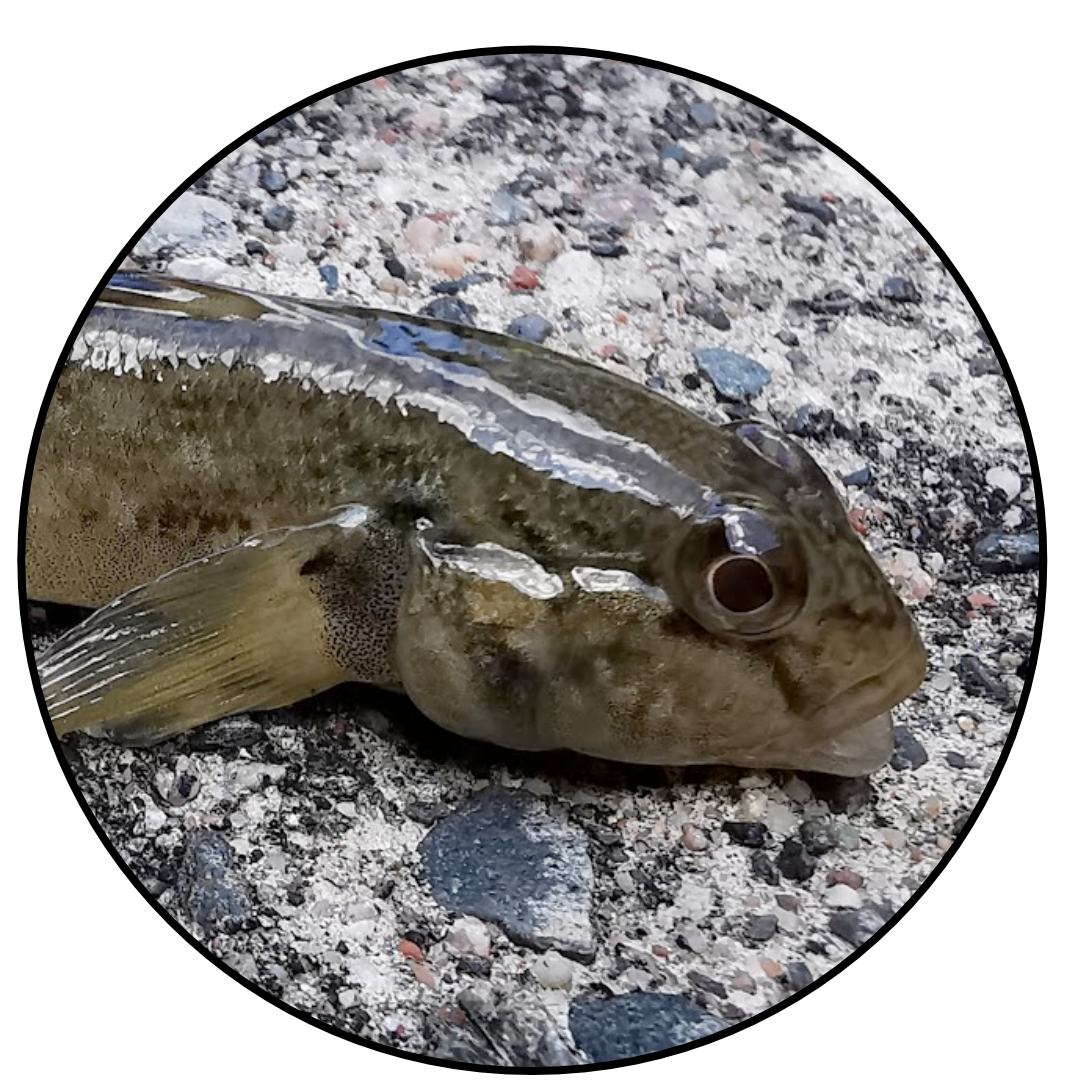
Large head, bulging eyes
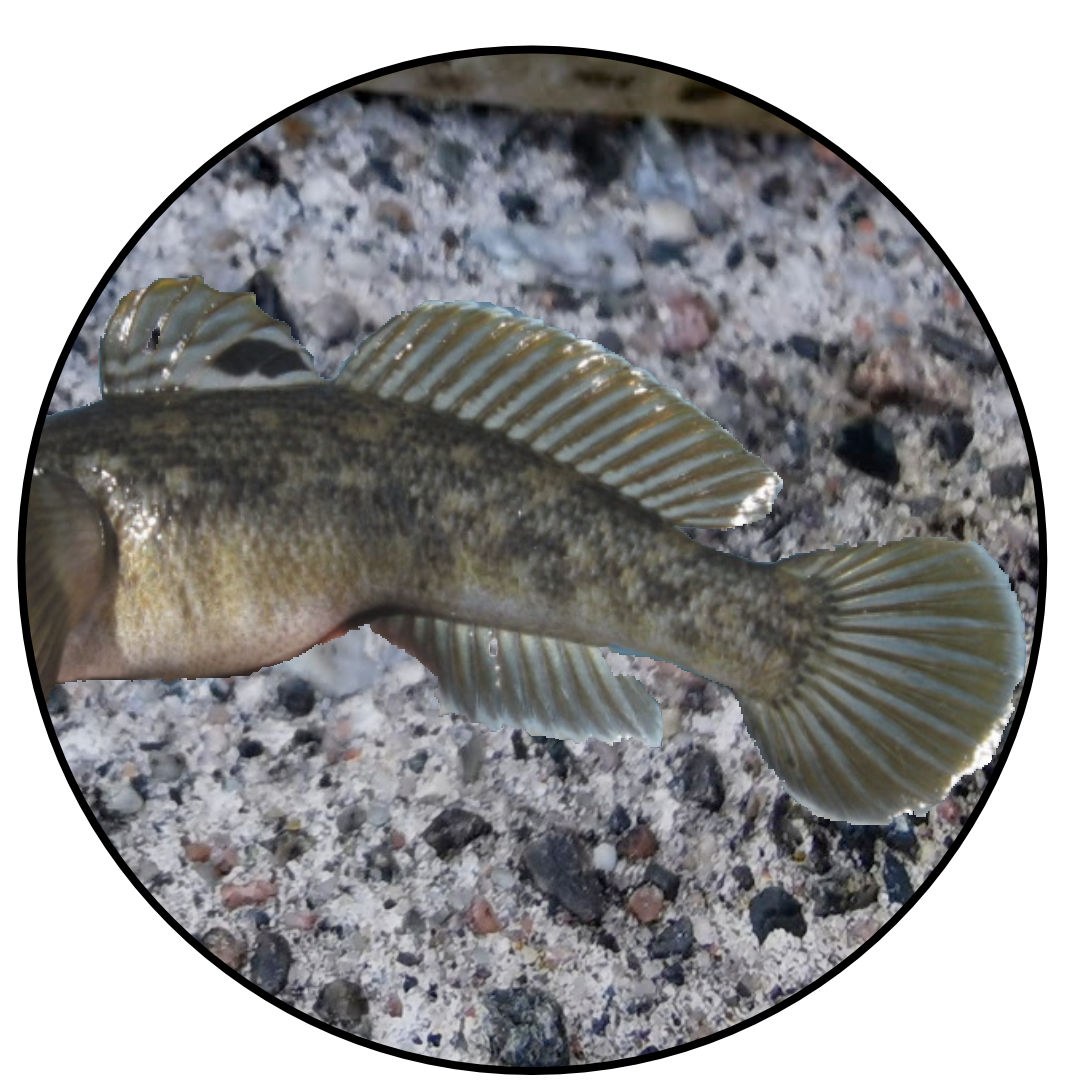
Distinctive dorsal and caudal fins
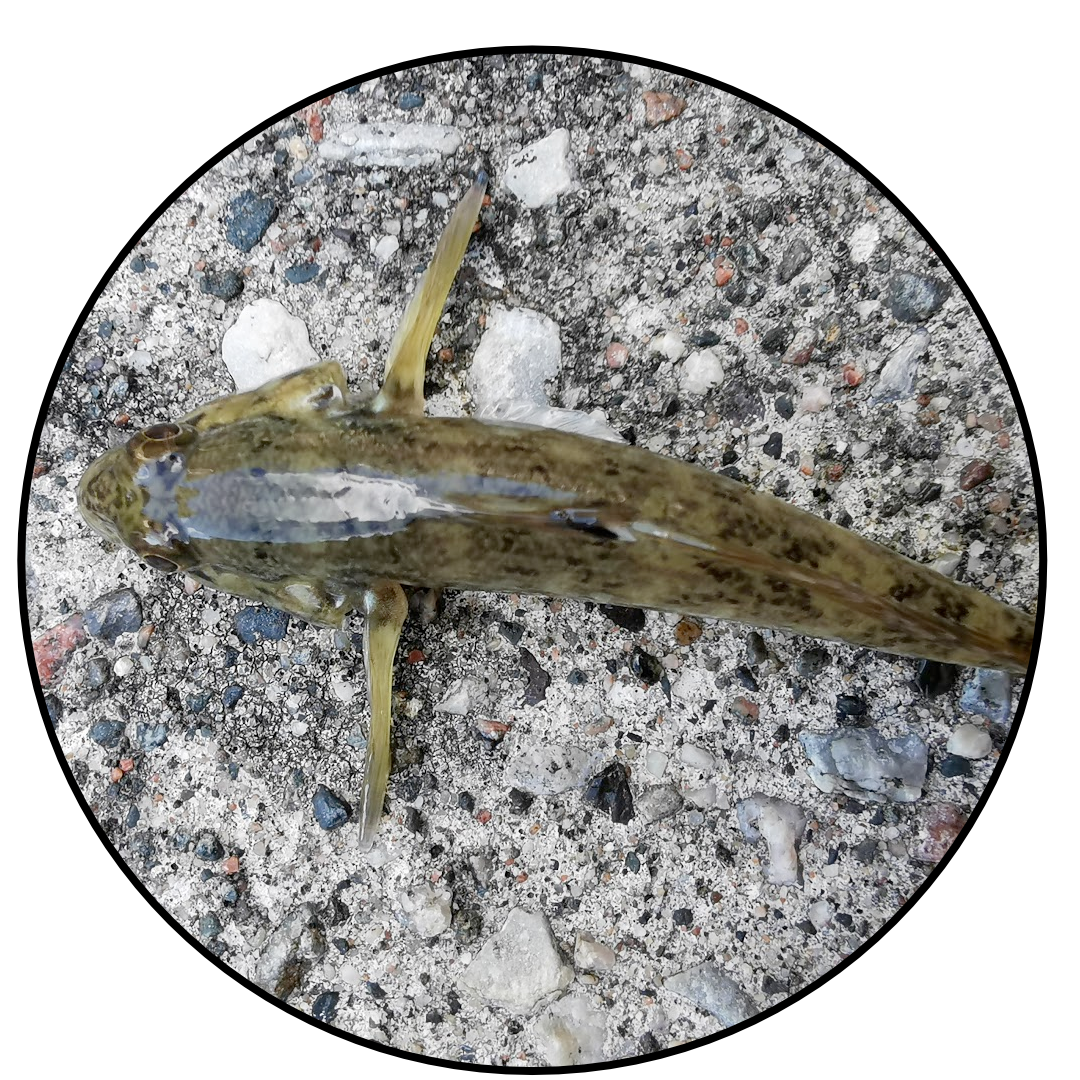
Elongated body with large head
Most predator fish look at food sources in three distinct ways.
- Food-source identification,
- Energy-use
- Potential for injury.
Let's look at these factors more closely and learn why goby are often more preferred than other food sources.
1. Food Source Identification
Most fish have a similar visual acuity to humans with some exceptions. Fish have a lens cover that helps them see more clearly underwater which helps them to identify their prey more precisely. In addition, some fish species have evolved with heightened night vision or UV detection that allows them to feed during no-or-low light conditions such as walleye. Other species like lake trout have a particular sensitivity to vibrant colors that helps them to be more selective in their food choices. However, when identifying food, fish all share a common approach. Whether in clear water conditions or in low-visibility water, fish will identify their prey by their physical body profile first. This does not bode well for round goby given their bodies offer many distinct features that separates them from other food sources. From the top, goby have a unique elongated body with a large head and narrow tail. This exaggerated profile makes it easy for fish to identify goby when viewing from either the top-down, or from the side. They are unmistakable compared to smelt, emerald shiners, dace, fathead minnows, etc. Predatory fish learn bait profiles throughout their lives and target the food sources that offer the most energy for the least amount of work.
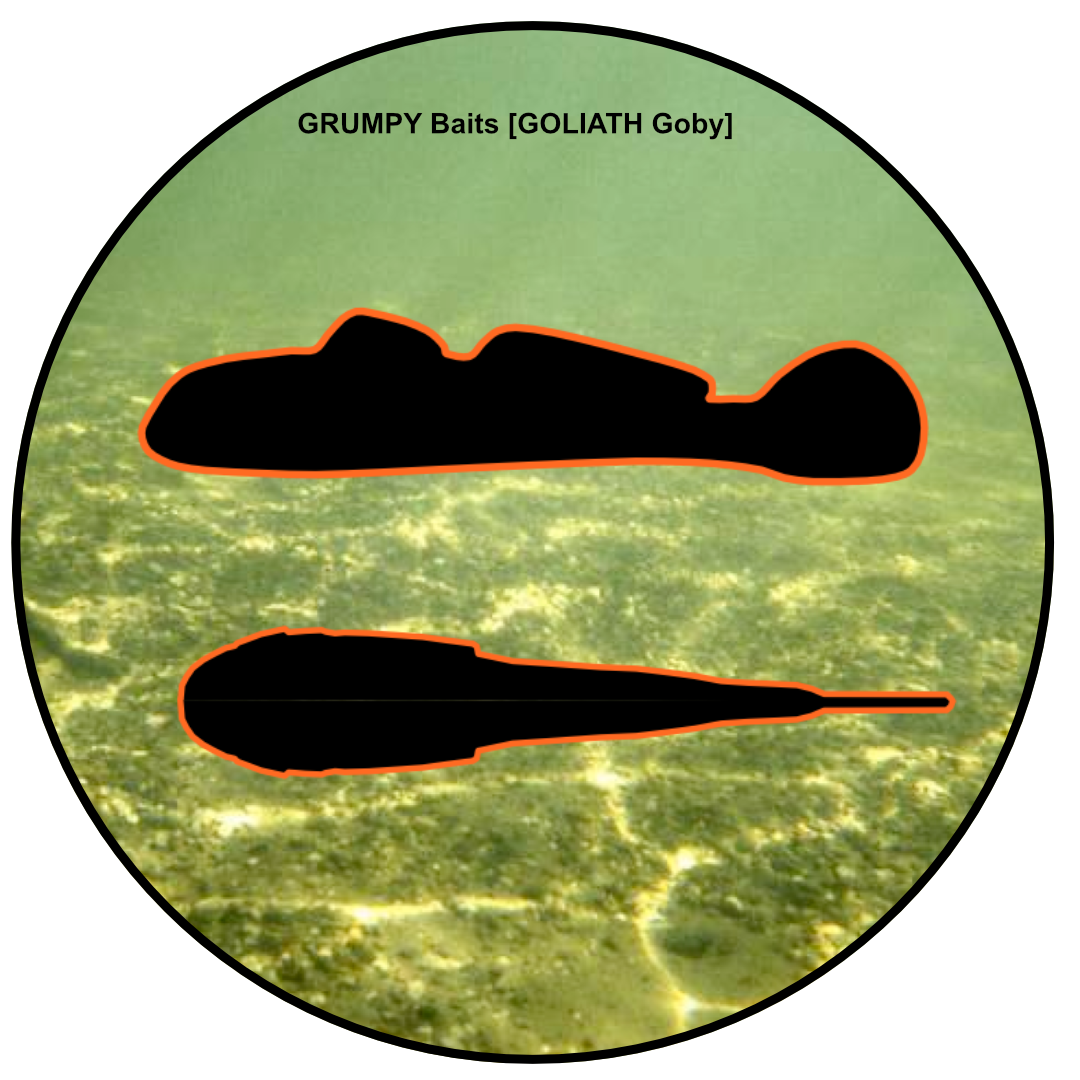
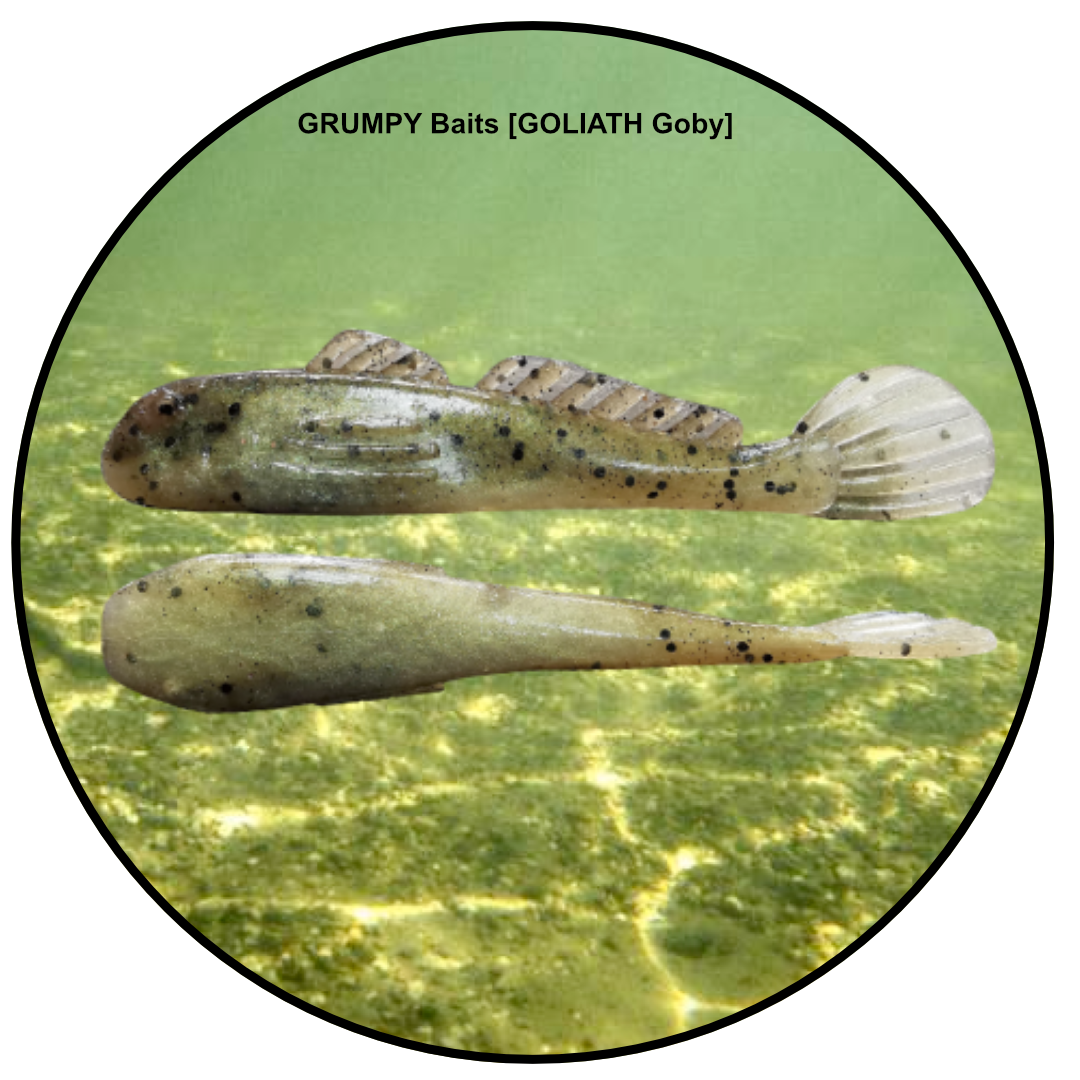
2. Energy Gained vs. Energy Spent
Energy-use for predator fish relates to the amount of time, distance and resulting energy attained from the consumption of a food source. Bass anglers know intuitively that crayfish, frogs and minnows are key traditional food sources. Each prey requires a very different sort of energy to obtain. Take for example a crayfish that is a hard-bodied food source with whiskers, sharp pincers (claws) and has the ability for rapid burst get-a ways along the bottom. Bass learn early in their life which prey are easy to catch and which are more difficult. Their "prey-portfolio" is literally ingrained in to their memory like instinctive salmon going back to the same river they were born in. Referring from past catch experience, bass will also consider the surrounding environment and internalize the potential for success. Are their weeds nearby, what about rock piles or logs that crayfish can flee and hide under. Bass look at the crayfishes relative distance to cover and determine if it's worth chasing or not.
Goby on the other hand are not as equipt to hide from predator's as are crayfish or other minnow species. The lack of an air bladder means they cannot move great distances in a vertical or diagonal direction. They are virtually restricted to lateral bottom movement and rely heavily on their ability to camouflage and hide between rock crevasses and other lake bottom features. Their prolific nature offers predatory fish an endless supply, coupled with the ease of identification and minimal energy spent, goby will continue to be a top choice for Great Lakes sports fish.
3. Low Injury Potential Prey
Predator fish also consider personal harm when determining if a food source is worth pursuing. Consider a crayfish and the potential harm it may do on a fish . Studies have shown that crayfish with smaller, less pointy pincers, or missing pincers are more likely to gain interest from a bass. The fact remains, pincers are a defensive mechanism and can truly harm a fishes eye, gill rakers or fins. When cornered, crayfish hold out their pincers to defend themselves, requiring bass to find the right position to attack, or disregard. On the other hand, freshly molted crayfish have small and relatively soft bodies and pincers, making them an easy prey option requiring low energy and with low personal risk to injury.
So how does this relate to Goby? Goby are a newly introduced invasive species that predatory fish have evolved to consume. Remember that at a young age, predatory fish learn which prey are easy and less injury-prone to catch. Fish weigh out energy use and potential harm to determine if they should pursue the prey or not. Goby are soft, do not possess sharp pincers or pointy spins and are located at the bottom of the water column where most sports species live and feed. Goby cannot swim up like other minnows nor can they use evasive maneuvers due to their awkward anatomical design. Goby fish are prolific with numbers on the rise in virtually every water body in and around the Great Lakes region. Making goby an ideal food source with no decline in populations expected.
When looking at the portfolio of common prey in the Great Lakes region, fish have a variety of minnows, critters, amphibious and mammalian options to choose from. Species type, size and availability will be the determining factors for preferred food sources, however in the case of round goby - they exist almost everywhere now with many species consuming them as their primary prey. Anglers have been recording goby in the stomachs of walleye, perch, bass, burbot for many years however more recently anglers are reporting similar findings in lake trout, whitefish, brown trout, and even various species of salmon.
Goby have become a staple food source for many fish species and will continue into the future. For anglers, this means goby imitation baits such as the ones made by GRUMPY Bait Company will be key to improving your catch odds and landing more fish. The more realistic the bait looks, feels and tastes, the more likely to connect with more and bigger fish.
Check out this video highlighting how smallmouth bass are tuning into round goby as a primary food source. Credits to Hook n’ Look
Protectionism and Behavioural Imprinting in the Presence of Goby
As mentioned previously, many fish species develop behavioural imprinting at a very young age. This can range from migration-imprinting such as salmon finding their way back to their original spawning grounds, to feed-imprinting like rainbow trout eating salmon eggs during the spawning season. In both cases, environmental influences occur at a very young age and we find similar characteristics with sports fish that feed on goby.
During the months of May-June, in Southern Ontario smallmouth bass spawn using a nest that is guarded by the male, until the young grow large enough to fend for themselves. During this period of spawning and guarding, goby will sit around the protected nest, waiting to scoop up eggs or freshly hatched fry. This is the peak time that mature bass use protectionism. While fending off goby, mature fish develop an innate territorial behaviour that automatically places goby at the top of the "chomping" block. More than ever, goby are the nuisance predator for spawning bass which is another reason why bass feed so aggressively on goby. Goby predation is ingrained into the mind of both mature and baby fish and is another clear reason why predatory fish species consume goby.
SIDE-NOTE: This is why it is important that anglers do not target bedding bass. The moment you lift the fish away and leave the nest unguarded, goby will take advantage and eat as many eggs and fry as they can.
With the presence of an unlimited number of goby waiting to feed on baby bass, walleye, trout, panfish, etc., both young and adult fish quickly learn that goby are a threat. For young fish, developing an avoidance approach until they are large enough to feed on goby is critical to their existence. This same relational understanding of goby eventually switches as bass begin feeding on goby. Given the fact that baby bass and goby inhabit a similar water column, bass fundamentally understand how goby move and where they live. This behavioural imprinting helps adults later in life as they forage goby.
It is no mistake that many bait manufactures have keyed into the feeding behaviour of many Great Lakes sports fish. From goby-colored worms and crawfish, to goby-color creature baits, anglers are asking for more goby-like baits. The more realistic the goby bait in terms of profile, size and color, the more likely the angler will be successful on the water. At GRUMPY Bait Company, we design our goby in a variety of sizes and realistic colors to match most gobies found in the Great Lakes region. We manufacture more true goby styles and colors than another other manufacturer in North America. Check out our products visit www.grumpybaits.com today!
Habitat - Find the Goby, Find the Fish
The 2020 ice fishing season really sends this topic home. The water body is Lake Simcoe and the target fish is Lake Whitefish (whitefish). Lake Simcoe is a hotspot for ice fishing with thousands of anglers hitting the hardwater each year. 20 years ago, most anglers setup in the deeper zones of the lake to target cisco, whitefish and Lake Trout (lakers) using spreaders tipped with Emerald Shiners. These deeper reaches were relatively flat, muddy/clay bottom with little structure. Fast forward to 2020, anglers are now setting up in 18-30 feet along or ontop of underwater shoals in search of whitefish, lakers and burbot. Why the change in depths for species typically found in the deep reaches of Lake Simcoe? Goby.
Since the invasion of goby into the lake, anglers are throwing away their tip-ups and spreaders, instead jigging soft plastic and hard goby imitation baits in and around shallow underwater shoals and in areas with rubble and rocks . Their success is irrefutable with catch limits being reached by most anglers that have clued into goby baits such as the GRUMPY Round Goby [Lake Simcoe Color]. Goby prefer rubble-type bottom and spend much of their time around reefs and humps that offer goby a food source while also offering cover from predator fish like whitefish and lakers.
Find the goby, find the fish is a fairly simplistic approach yet many anglers forget the fundamentals. Whether sticking with traditional techniques passed down from older generations, or giving in to crowd mentality (going where everyone else goes), anglers cannot overlook the importance of goby and their ability to catch fish. As a primary food source for may sports species whether in Lake Simcoe, Lake Erie or inland lakes such as Lake Belwood, goby are here to stay and anglers need to tune into them.

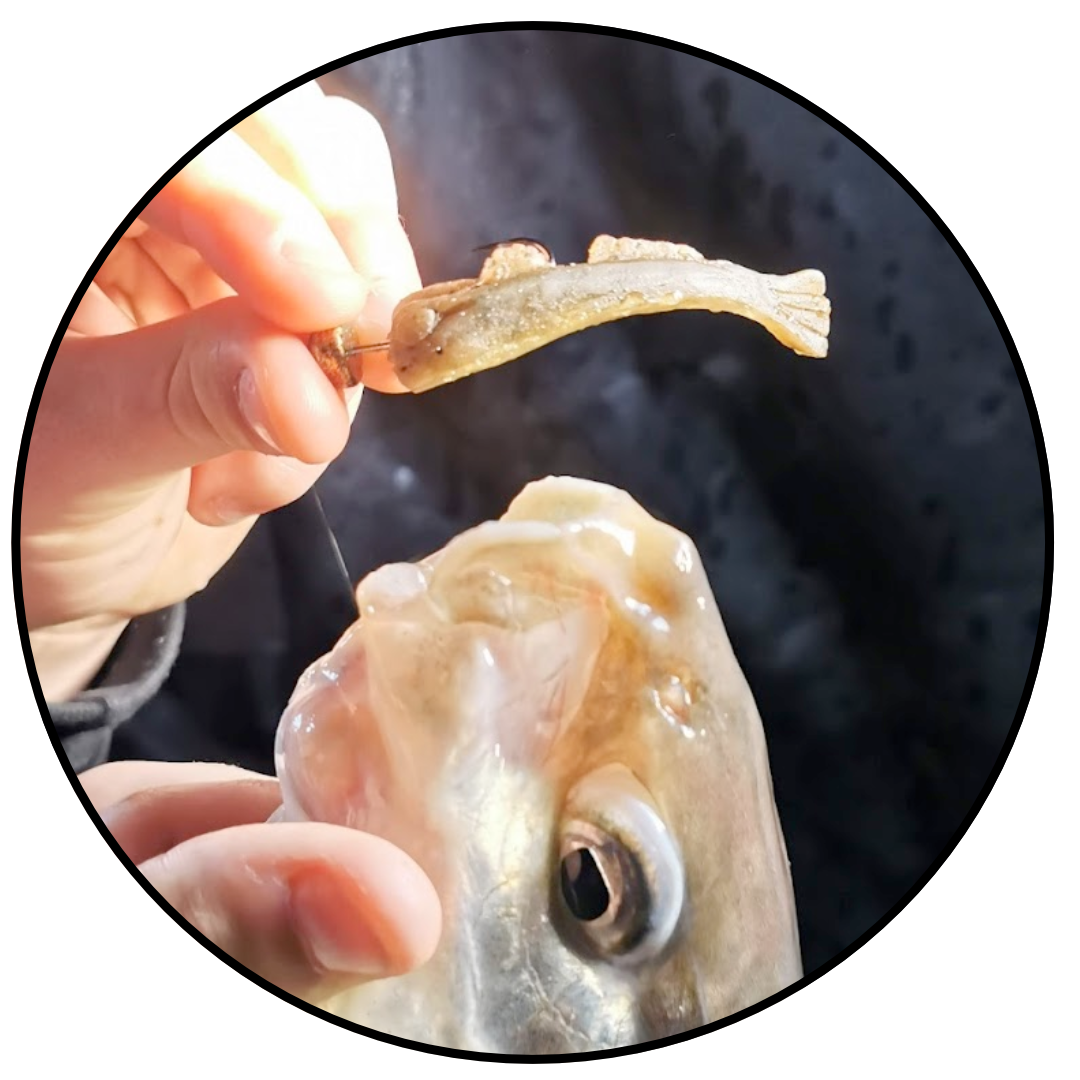
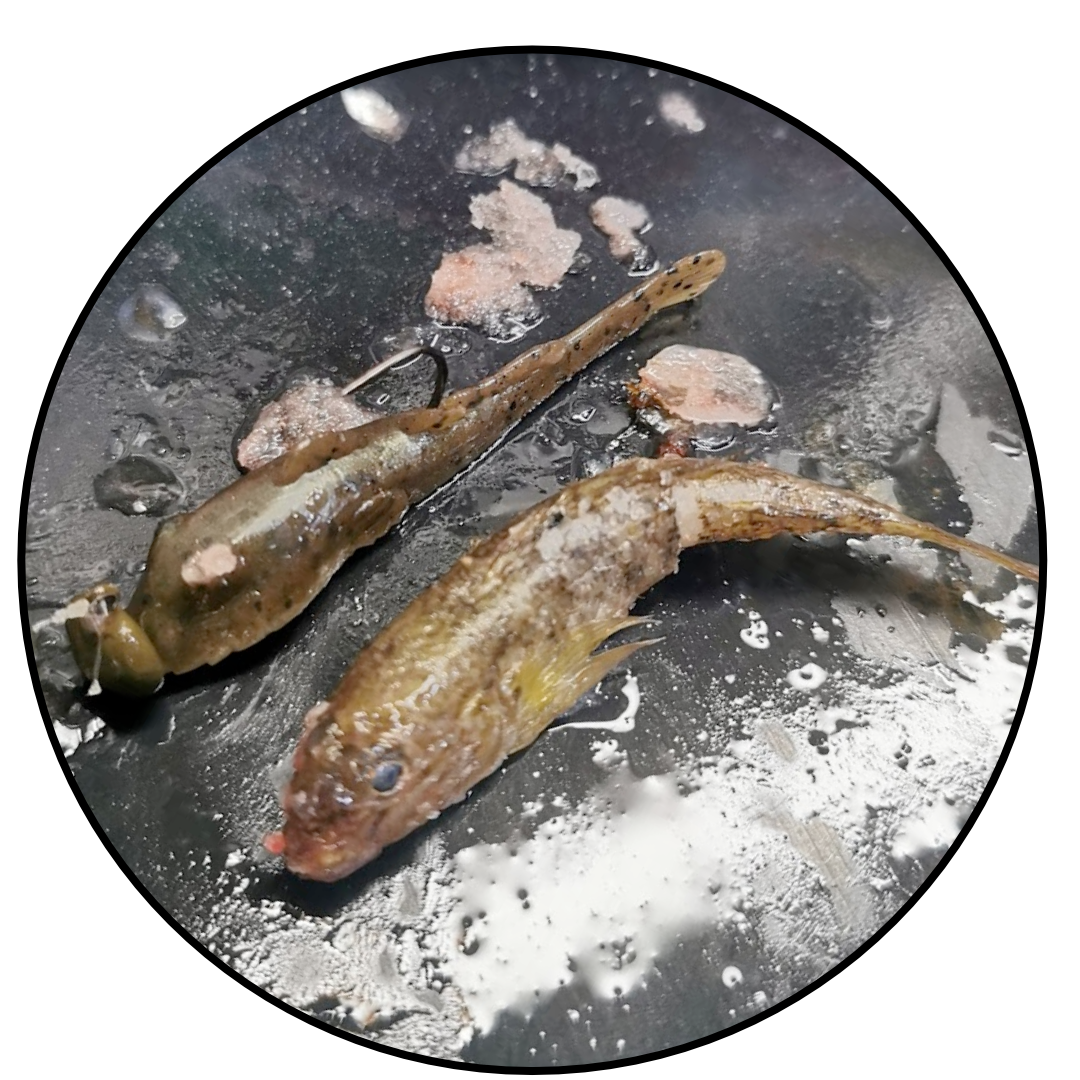
Rigging, Fishing Techniques, Color, Style/Size and Scent - The Goby-Way
Goby are odd little bottom dwelling fish that look and act very different from other bait fish. Their coloration most commonly ranges from a light golden brown to a dark olive brown, yet anglers have recorded pure black and spotted black goby in the Great Lakes region. The most common approach to catching target sports fish is to match-the-hatch; a common term used when selecting baits to look and act like what is found in the waterbody being fished. Bait profile (ie. goby) alone does not determine if a bass or walleye will strike. Coloration, fishing technique and scent all contribute to the choice the fish makes.
Animals truly adapt to their environment and fish are no exception. We see this particularly in goby as their coloration can change from lake to lake, or even from within different locations in the same lake. Depending on the lake bottom type (shale, mixed rubble, clay/rubble, rubble/weed) and forage goby are feeding on, color and patterns can vary drastically. Goby are commonly found with a greenish-brown molted pattern however some goby can be found with a golden-green or dark-olive/brown coloration. Male goby during a spawning period can be pure black.
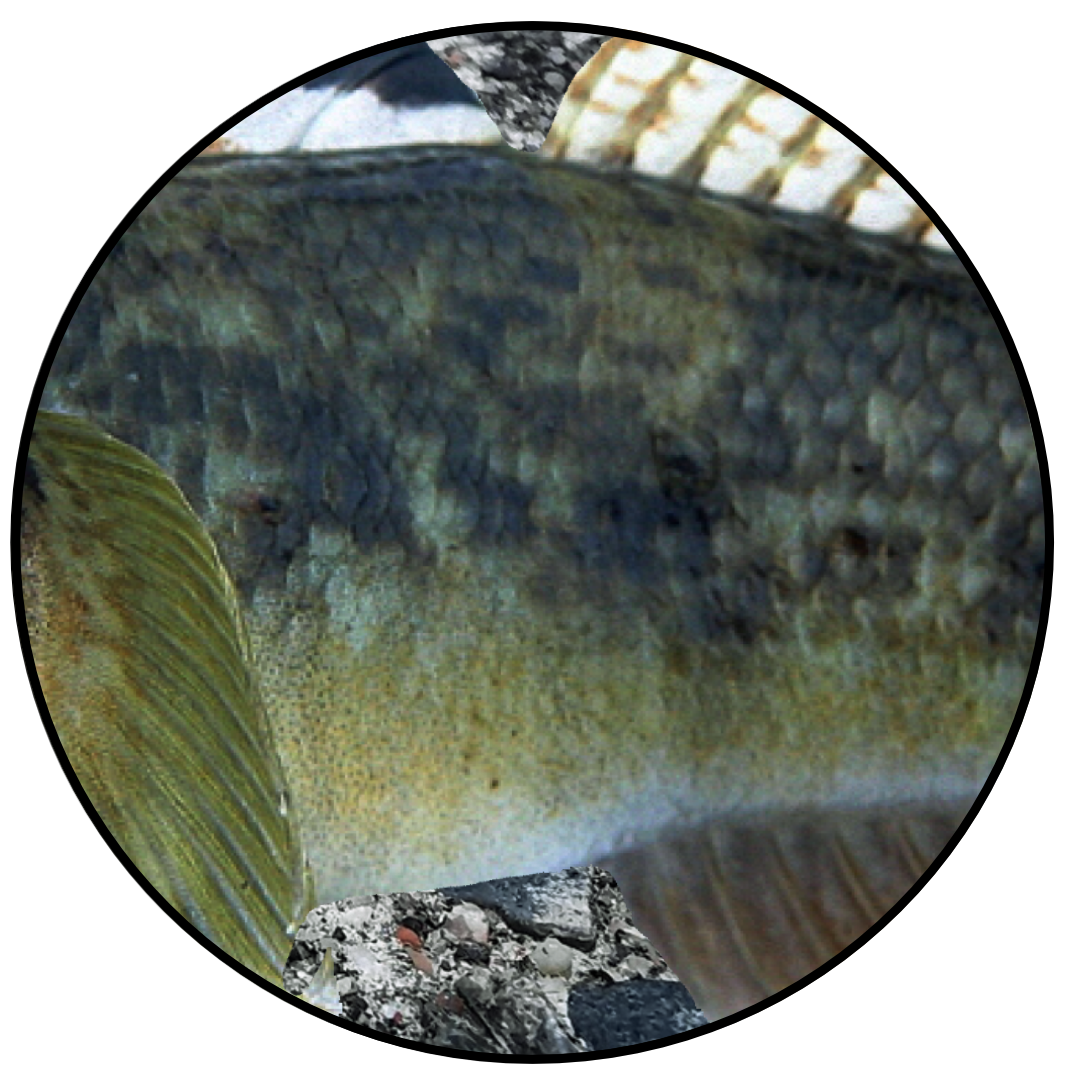

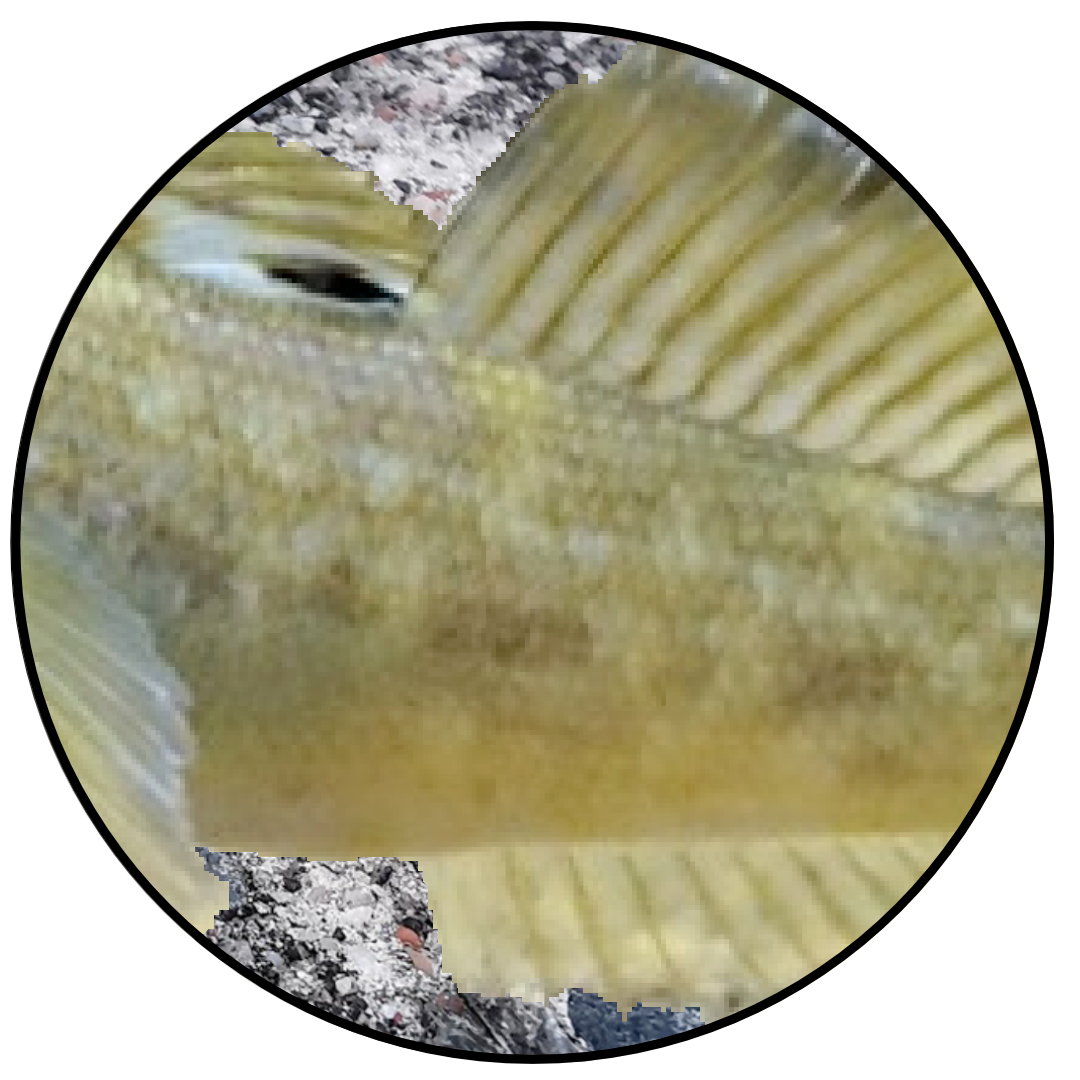
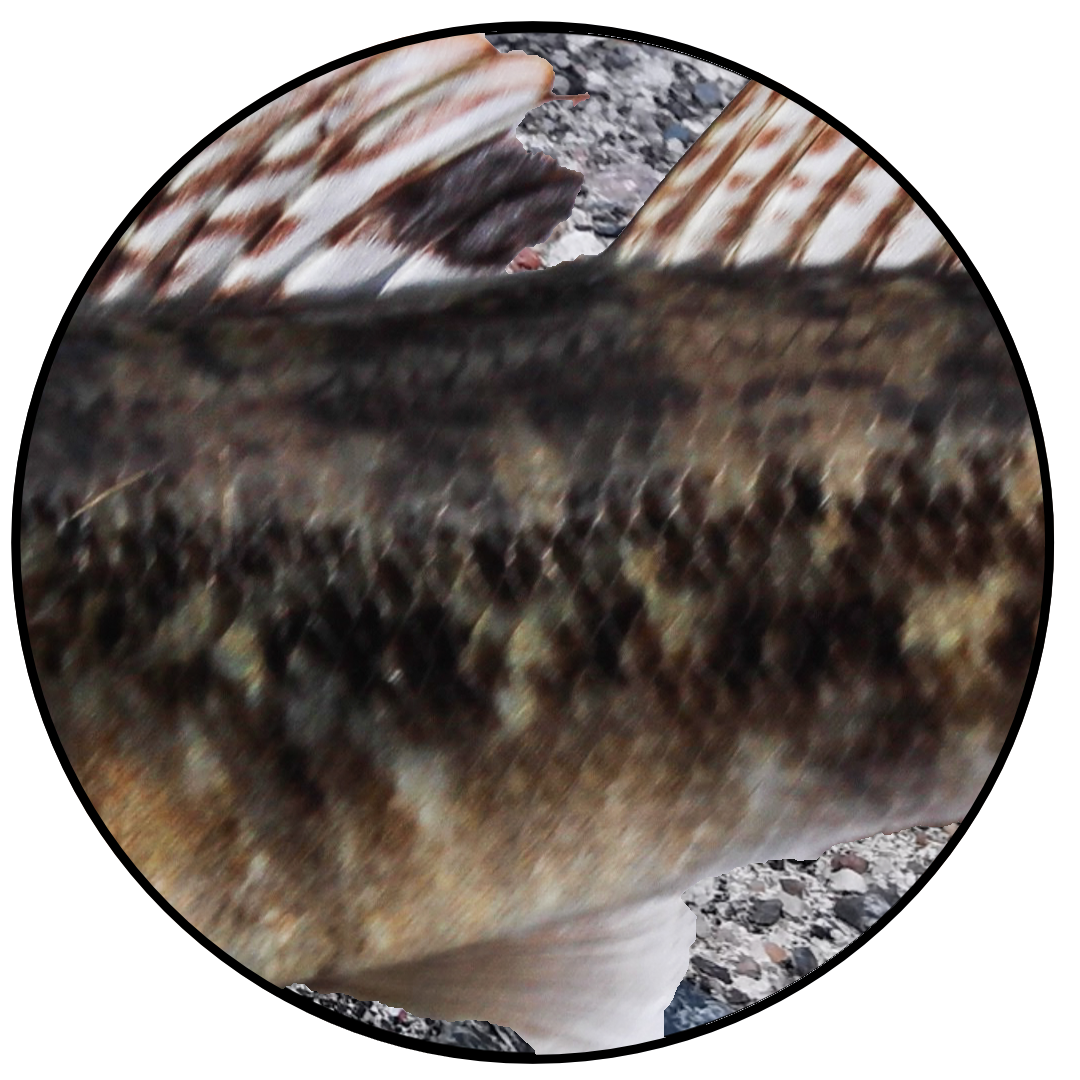
Round Goby can be found in a variety of color patterns and is important to have a variety of colors to match-the-hatch
How to Rig Your GRUMPY Goby
Since goby are bottom dwellers, it would make sense to present your goby baits along the bottom. Presenting your bait as a swim-middle water column bait would not appear realistic to fish. Hence, the most common rig when using soft plasitc goby baits is the ned-style jig. The ned jig comes in a variety of sizes/weights and material, the most common is lead however tungsten is also becoming more popular (although more expensive per jig). The key here is to match the bait size with the proper ned jig hook and weight size. Ned manufacturers often use a standard 1/0 or 2/0 hook size however, in many cases those hooks sizes are far to large for small profile goby baits.
To maximize fish catch, these general rigging rules should be considered:
- Go with the lightest possible weight you can, considering the conditions encountered. As a general rule of thumb, in windy or high-velocity currents, use heavier weight.
- Try to find a jig color that matches your goby bait color.
- Ensure the hook size is not too big or too small for the bait. It should have enough hook exposure to allow penetration when setting the hook, but not too much that the hook sits out like a sore thumb.
Recommended Goby Rig Setup
- Given the fact that goby are found on the bottom, vertically jigging or cast-and-retrieve along the bottom is critical - goby do not swim in the upper water column!
- Make sure to select a Ned-style jighead such as our Ned G-Jig or Micro G-Jig. The flat back and overall shape are optimal for soft plastic goby baits
- Jig weight selection: general rule of thumb is to go with the lightest jig head possible, given the conditions you are facing. Deeper water or high winds dictates heavier jigs such a 1/4 oz. Shallow water or ice fishing typically 1/16-1/8 oz jig weight
- Match the Ned-style jig size to the bait. 2"-2.25" goby bait use #1 or #2 Ned hook size. 2.6" goby bait use #1 or 1/0 Ned hook size. 3.25"-3.3" goby bait use 1/0 or 2/0 Ned hook size
- Match the jighead color to the bait. Most goby baits are natural in color however, goby colors do vary from lake to lake - try to match the dominant colors! GRUMPY Baits has over 56 color options including Lake Simcoe Goby, Lake St. Clair goby etc.
Learn more about GRUMPY Bait Compy visit www.grumpybaits.com or email

2.6" Round Goby with 1/8oz Round Nose Jig

2.25" Mini Goby with 1/8oz Round Nose Jig

3.3" GOLIATH Goby with 1/8oz Round Nose Jig

2" Micro Grubby with 1/8oz Round Nose Jig
Fishing Techniques for Soft Plastic Goby Baits
Keeping your bait in the goby strike-zone is extremely important to improve your odds of catching fish. Particularly when fish are finicky or in a negative feeding state. Attention to detail is one off the biggest elements of fishing and will help you connect with more fish when other anglers struggle. As mentioned in this article earlier, predatory species learn the behaviour of goby and anticipate their location, movements and reactions to predators. When presenting baits outside of the normal behavioural patterns, eg. jigging a goby bait in the center of the water column, vs along the bottom, fish discount the lure as a goby. The less confusion an angler gives to fish, the more likely the fish will take the bait.
GOBY FISHING TECHNIQUES & RIGS
NUMEROUS GOBY FISHING TECHNIQUES
To Help You Optimize Your Bait Presentation
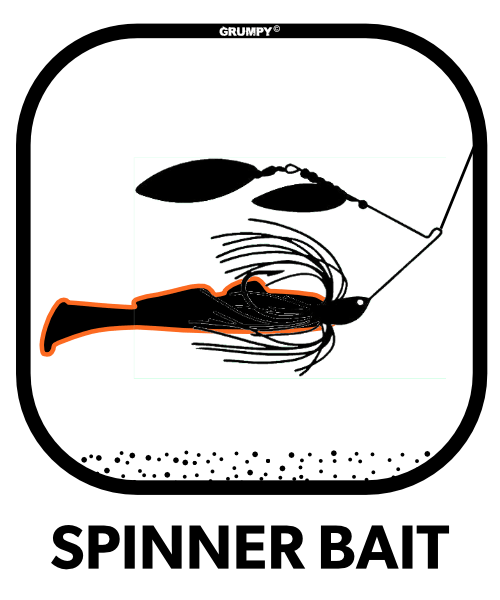
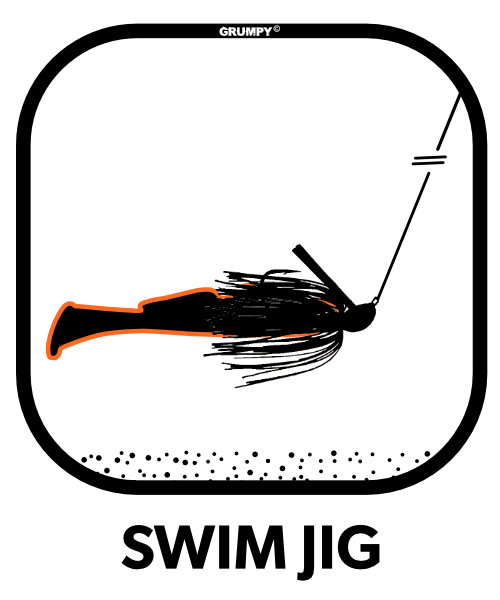


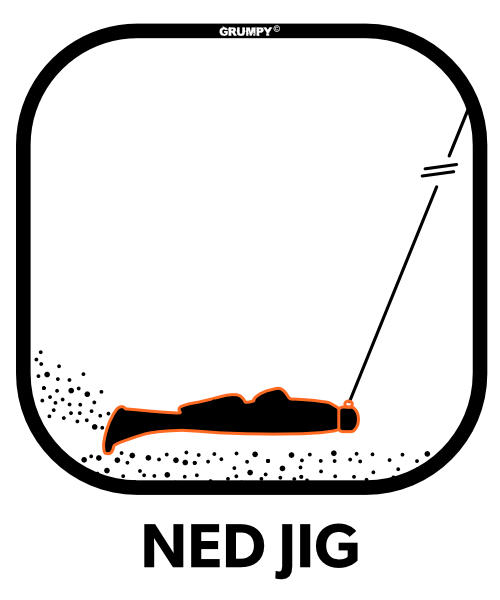
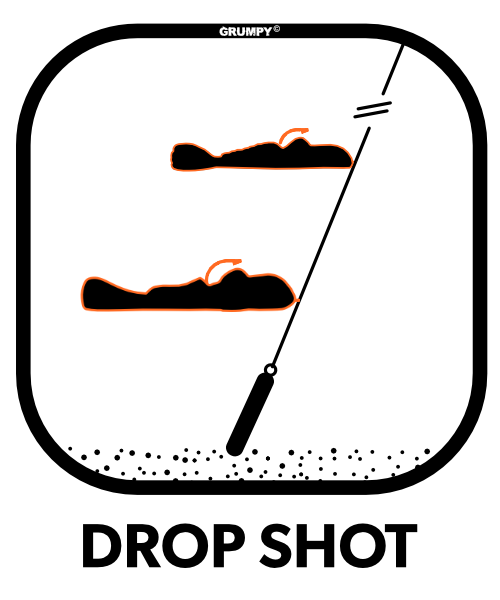
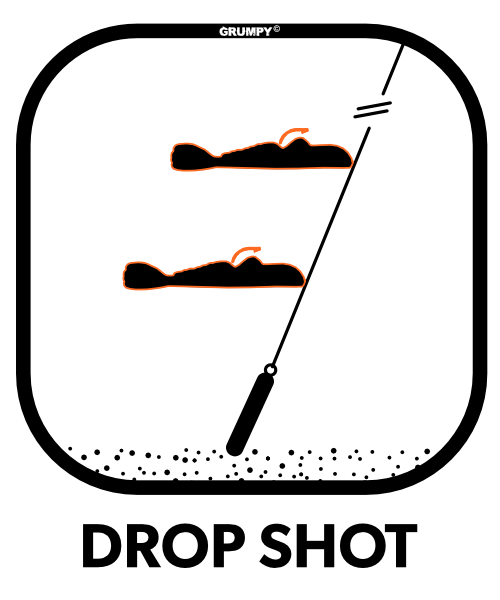
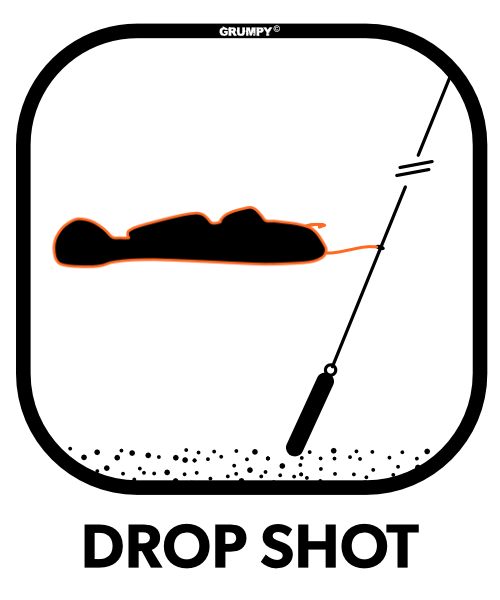
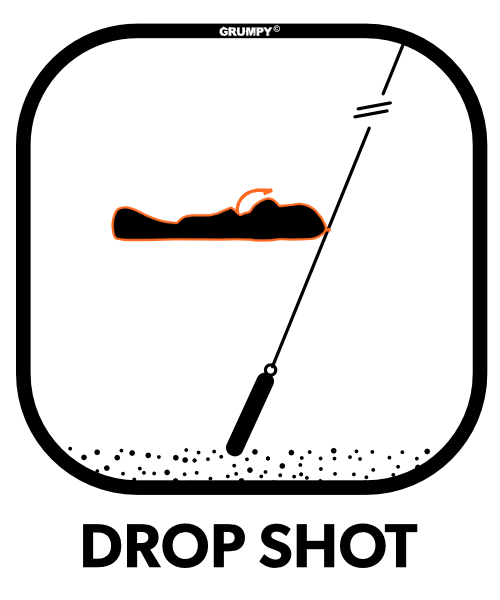
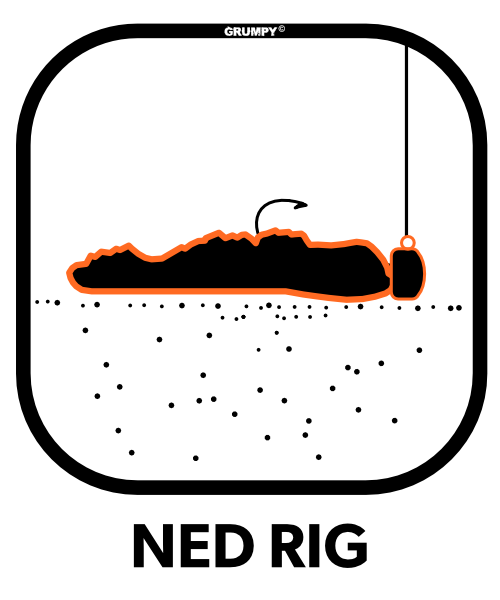
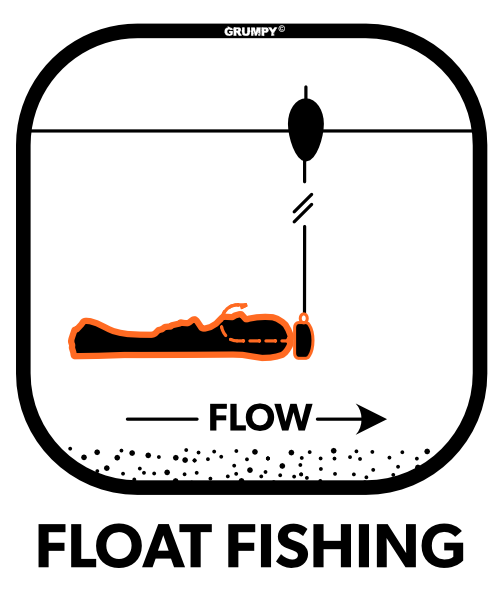
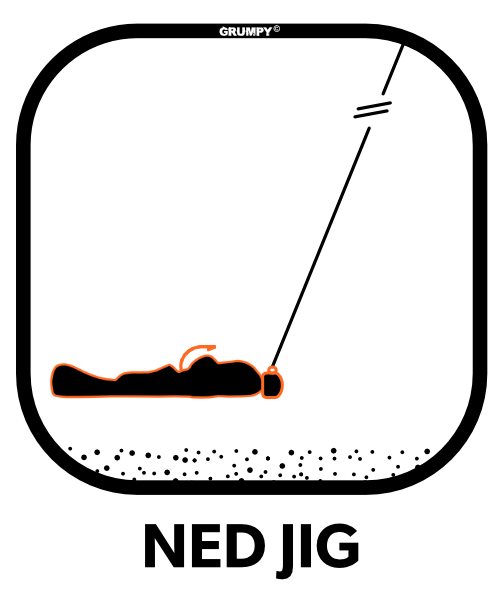

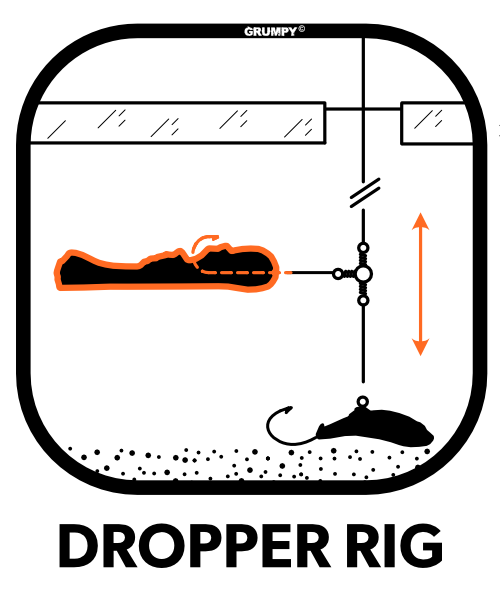
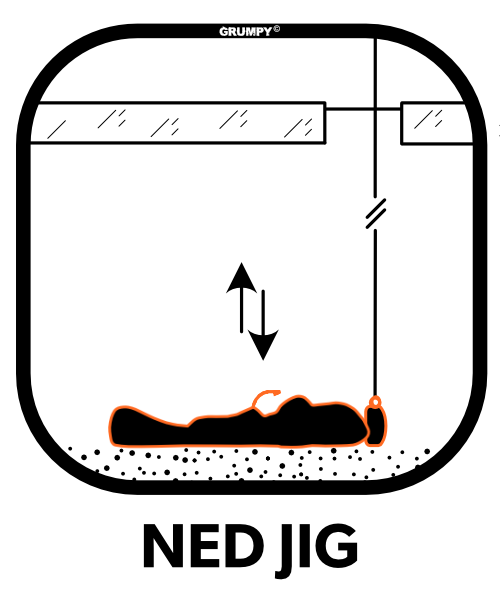

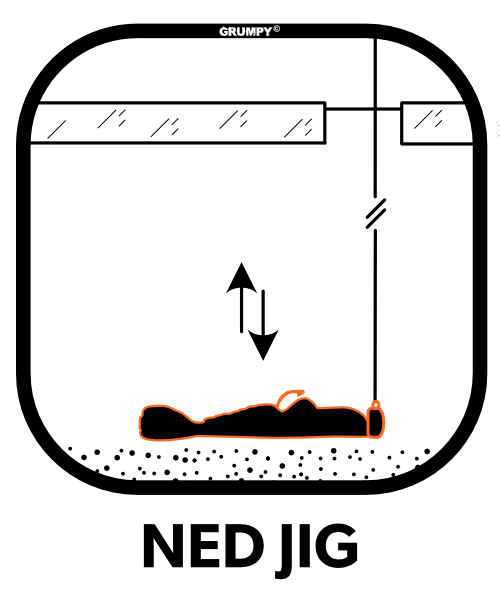


When selecting color, there are many factors including water clarity, cloud cover, water depth and timing. For this article, we will cover timing and later in another article go into detail about the other factors.
Reaction Colors
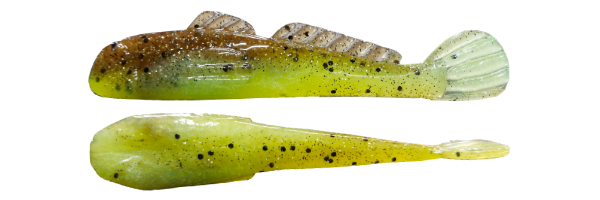
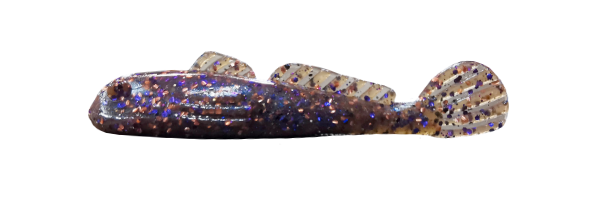
1) Are you targeting sports fish during post- or pre-spawn phase?
During this period, fish such as bass, walleye, lake trout etc., tend to be in a heavy state of activity. Whether to feed for sustenance before dormant periods like winter, or to eat as a recovery from spawning, these periods allow anglers to venture outside the normal match-the-hatch approach. Adopting brighter, unrealistic colors (eg. hot orange, chartreuse, etc.) can gain the attention of fish and entice the strict.
Natural Colors
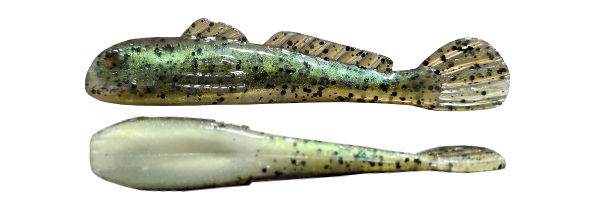

2) Are you targeting sports fish during the regular season, between post-spawn and pre-spawn?
During the regular season, fish tend to move into a more normal feeding pattern. They are often more active during low light conditions such as early morning and evening and conserve their energy during the day for when it matters most. During these peak times, fish are more forgiving and you may get away with unnatural colors, however during the day, fish will take their time to look at a bait, analyze it's profile and movements, and consider other factors such as scent. Anglers often adopt a match-the-hatch approach during the regular season and opt for more realistic bait colors and patterns.
Summary
It is a widely-recognized fact goby are being eaten by many fish species that anglers target both recreationally and professionally. Goby are prolific and will be next to impossible to eradicate. While nature tries to balance out goby populations, anglers can take advantage of realistic goby style baits. While many manufacturers are adding goby colors to their non-goby-style baits (eg. worms, frogs, critters, abstract baits), the GRUMPY Bait Company focuses on producing soft plastic goby baits that are anatomically correct and look like the real thing.
Why not optimize your chances by using goby baits that actually look, feel and even taste like the real thing?
Questions about this article? Please feel free to contact us.
Learn more about GRUMPY Bait Compy visit www.grumpybaits.com or email
Learn more about GRUMPY Bait Company visit www.grumpybaits.com or email
